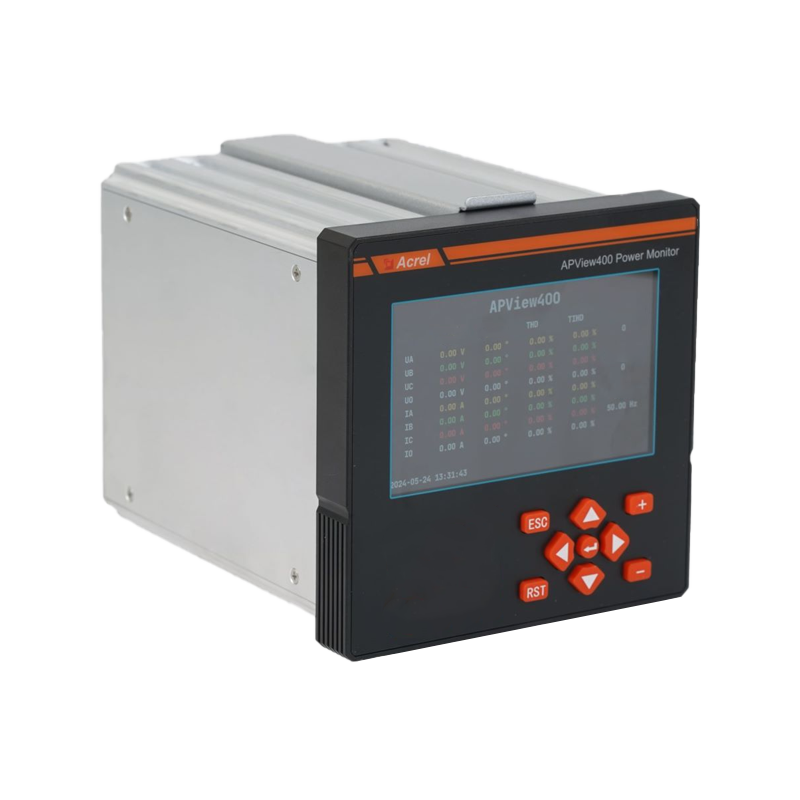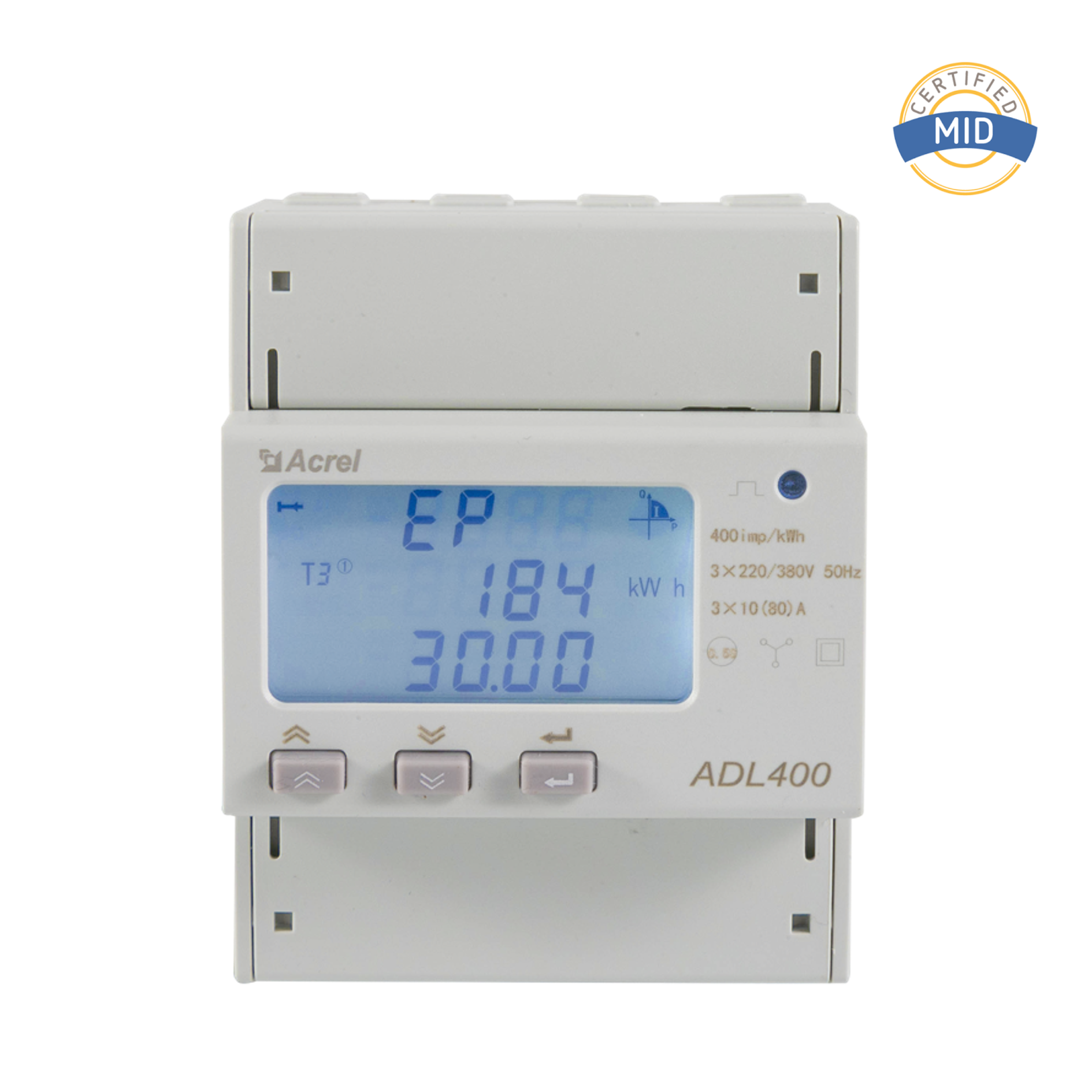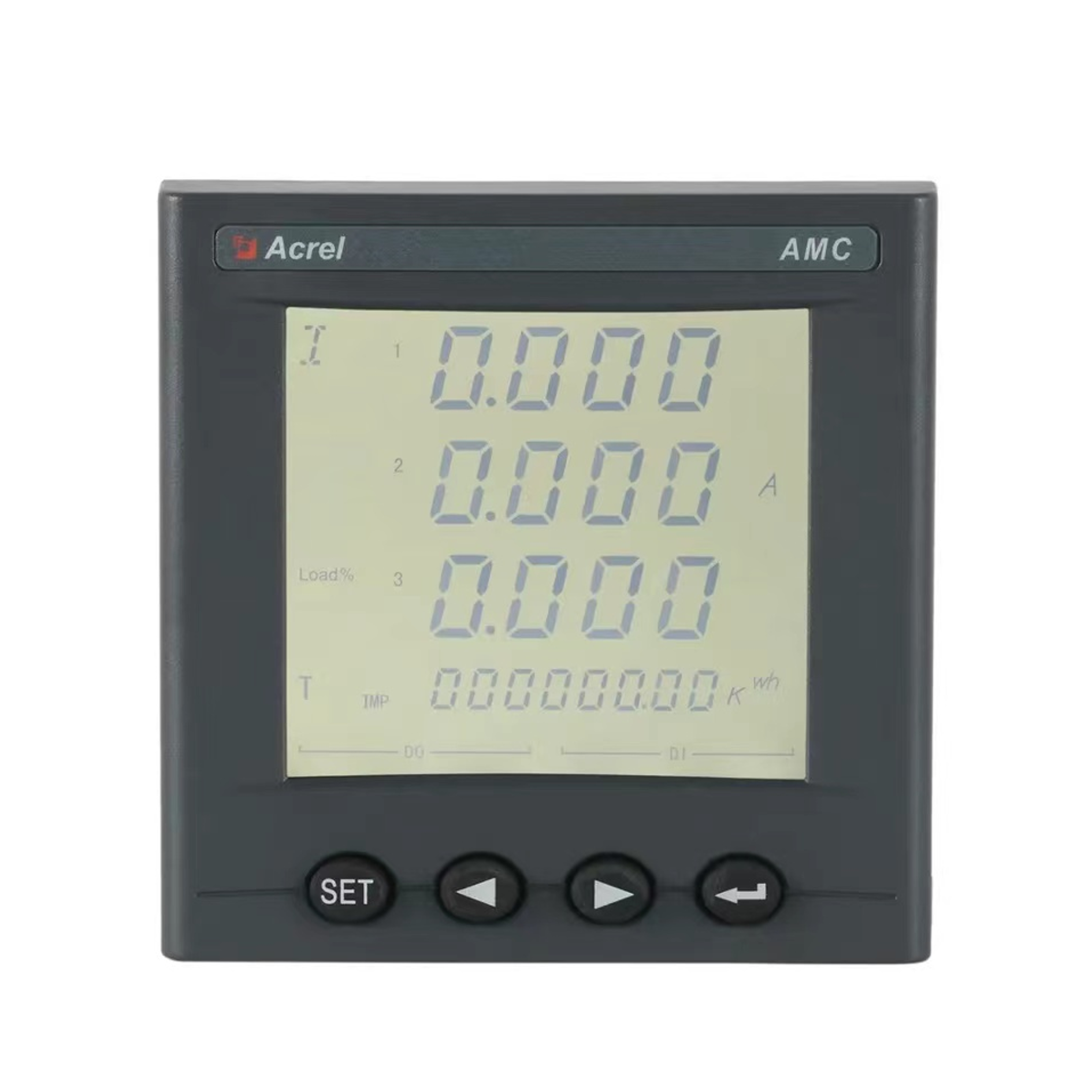How Do Smart Meters Enable Precise Load Profiling and Demand-Side Management?
The traditional electrical grid, for much of its history, operated on a simple, one-way principle: generate power, transmit it, distribute it, and bill customers based on a cumulative reading from a mechanical meter. This model offered limited visibility into how and when energy was consumed. The modern grid, however, demands intelligence, efficiency, and resilience. At the heart of this transformation lies the ac smart energy meter, a device that has evolved from a simple billing tool into a critical data node for the entire energy ecosystem.
From Analog Accumulation to Digital Intelligence: The Core Capabilities of an AC Smart Energy Meter
To understand how an ac smart energy meter enables advanced grid functions, one must first appreciate its fundamental technological leap over its predecessors. Unlike an analog meter that simply counts kilowatt-hours (kWh) with a spinning disk, a smart meter is a sophisticated embedded system. Its operation can be broken down into a continuous cycle of measurement, communication, and analysis.
The primary function of any ac smart energy meter is the high-fidelity measurement of electrical parameters. It continuously samples the voltage and current in a circuit. Using digital signal processing, it calculates a wide array of values beyond just total energy consumption. These include active power (kW), reactive power (kVAR), apparent power (kVA), power factor, and frequency. Crucially, it does not merely accumulate these values; it time-stamps and logs them. This granular, time-series data is the foundational element for all subsequent analysis. The ability to record consumption at short intervals—ranging from every 15 minutes to every few seconds—is what differentiates a smart meter from a conventional one. This detailed data capture is the first step in moving from a vague understanding of “how much” energy was used in a month to a precise knowledge of “how, when, and where” it was used.
Following data acquisition, the next critical capability is communication. An ac smart energy meter is equipped with one or more communication modules, often referred to as the Advanced Metering Infrastructure (AMI). These modules can use various technologies, such as Power Line Communication (PLC), cellular networks (like 4G/LTE or NB-IoT), or radio frequency (RF) meshes. This two-way communication link allows the meter to transmit its collected data to a central system at regular intervals. Simultaneously, it can receive commands and configuration updates from the utility. This bidirectional flow is essential for demand-side management, as it allows for remote control and the implementation of dynamic pricing signals. The data transmitted is securely stored in databases, where it becomes available for the analytical processes that create load profiles and inform grid management strategies.
Deconstructing Energy Consumption: The Science and Value of Precise Load Profiling
A load profile is a graphical or numerical representation of a consumer’s electricity consumption over a specific period. In the era of analog meters, creating an accurate profile was nearly impossible, as the only data point was the total consumption between two manual readings. The ac smart energy meter has revolutionized this field by providing a continuous, high-resolution stream of consumption data. This transformation enables a multi-layered analysis of energy use patterns.
At its core, a load profile generated from ac smart energy meter data reveals the temporal signature of energy use. It answers critical questions: Does the consumer have a relatively flat consumption pattern throughout the day? Or are there distinct, sharp peaks in the morning and evening? For a utility, aggregating these individual profiles creates a comprehensive picture of the total load on a distribution transformer, a feeder line, or the entire grid. This granular visibility is invaluable for load forecasting and grid planning. Engineers can identify specific transformers that are consistently overloaded during certain hours, allowing for proactive upgrades before failures occur. Conversely, they can also identify underutilized assets, enabling more efficient capital allocation. The precision of this data helps in optimizing the operation of power plants, reducing the need for expensive and often polluting “peaker” plants that are only activated during times of highest demand.
Furthermore, the analytical value of load profiling extends far beyond the utility to the consumer themselves. For commercial and industrial users, detailed load profiling is a powerful tool for energy audit and operational efficiency. By analyzing their load profile, a factory manager can identify which production lines or machines are causing high demand charges, which are often based on the highest 15 or 30-minute average power draw in a billing period. Similarly, a large retail store can correlate its energy spikes with operational schedules, such as the simultaneous start-up of HVAC systems, lighting, and kitchen equipment. With this knowledge, they can implement simple load shifting strategies—such as staggering the start-up of large motors—to flatten their load profile and achieve significant cost savings. The ac smart energy meter thus provides the empirical evidence needed to move energy management from a guessing game to a data-driven science.
The following table illustrates common consumer types and the characteristic load profile patterns identifiable through ac smart energy meter data:
| Consumer Type | Typical Load Profile Characteristics | Primary Drivers of Peak Demand |
|---|---|---|
| Residential | Distinct morning and evening peaks. Lower baseload during night and daytime (when occupants are away). | HVAC systems, water heating, cooking appliances, electric vehicle charging. |
| Commercial (Office Building) | Sharp morning ramp-up, sustained high load during business hours, rapid drop-off in the evening. | HVAC, lighting, elevators, and office equipment (computers, servers). |
| Industrial (Manufacturing) | Highly variable, dependent on production shifts. Can have very high, sustained loads with large motor start-ups. | Large industrial motors, compressed air systems, process heating and cooling. |
Actively Shaping Demand: The Mechanisms of Demand-Side Management
While load profiling provides the diagnostic insight, demand-side management is the prescriptive action. Demand-side management (DSM) encompasses a suite of strategies and technologies designed to encourage consumers to modify their level and pattern of electricity usage. The ac smart energy meter is the indispensable enabler for most modern DSM programs, providing both the communication channel to the consumer and the measurement and verification capability for the utility.
One of the most direct forms of DSM is the implementation of dynamic pricing. Traditional flat-rate tariffs do not reflect the real-time cost of electricity, which can be vastly higher during periods of peak demand. An ac smart energy meter allows utilities to offer tariffs such as Time-of-Use (TOU), Critical Peak Pricing (CPP), and Real-Time Pricing (RTP). In a TOU structure, the price per kWh is higher during predefined “on-peak” hours and lower during “off-peak” hours. The meter tracks consumption against these different price periods automatically. For CPP and RTP, the utility can send a price signal or a “critical event” notification directly to the meter, informing customers of a temporary high price. Armed with this information and potentially aided by home energy management systems, consumers have a financial incentive to shift discretionary loads—like running a dishwasher, charging an EV, or doing laundry—to off-peak times. This collective behavioral shift results in a flattened system-wide load curve, enhancing grid stability and deferring the need for new generation capacity.
A more automated and advanced form of DSM is direct load control (DLC). In these programs, consumers voluntarily grant the utility or a third-party aggregator limited permission to cycle certain non-essential appliances on and off during periods of extreme grid stress. A common example is the cycling of residential air conditioning compressors or electric water heaters. The ac smart energy meter facilitates this by relaying control signals to a device attached to the appliance. The utility can briefly interrupt the operation of thousands of such devices across a service territory, creating a significant and rapid reduction in aggregate demand—a “virtual power plant” made up of negated consumption. The meter precisely records the duration and impact of these control events, ensuring that customers receive the agreed-upon financial incentive or bill credit. This capability is a powerful tool for peak demand reduction and grid balancing.
Beyond pricing and direct control, the ac smart energy meter is the cornerstone for demand response programs. Demand response is a broader term for actions taken by end-use customers in response to specific signals from the grid operator. The meter is the point of validation for these programs, accurately measuring the baseline consumption (what the load would have been without the intervention) and the actual consumption during the event. This measurement and verification are critical for settling financial payments and ensuring the integrity and effectiveness of the demand response market. Without the verifiable, time-stamped data from a smart meter, these programs would rely on inaccurate estimates and would not be scalable or reliable.
The Synergistic Benefits: How Load Profiling and Demand-Side Management Create a Smarter Grid
The combination of precise load profiling and active demand-side management, enabled by the ubiquitous deployment of the ac smart energy meter, creates a powerful synergy with benefits that cascade across the entire energy value chain, from the generation facility to the end-user.
For the utility and grid operators, the most significant benefit is enhanced grid reliability and resilience. By using load profiles to predict and identify stress points and then employing DSM strategies to actively manage demand, system operators can maintain the balance between supply and demand more effectively. This reduces the risk of brownouts or blackouts during heatwaves or other peak conditions. Furthermore, the fine-grained data from ac smart energy meter networks enables more rapid fault detection, isolation, and restoration. For instance, if a tree falls on a power line, the utility can receive alerts from a group of meters that have lost power, allowing them to pinpoint the outage location and dispatch crews more efficiently. Once the fault is isolated, they can often confirm restoration by receiving “heartbeat” signals from the same meters. This leads to improved system average interruption duration index (SAIDI) and system average interruption frequency index (SAIFI) metrics, which are key indicators of reliability.
From an economic perspective, the synergy drives cost efficiency. For utilities, reducing peak demand means they can purchase less expensive energy on the wholesale market and avoid the high costs associated with activating and maintaining peaking power plants. These saved costs can, in turn, help moderate the rate of increase in electricity prices for all consumers. For end-users, participation in DSM programs through dynamic pricing or direct load control offers direct financial savings on their electricity bills. Commercial and industrial users, in particular, can use the insights from their load profiles to make strategic investments in energy efficiency and load management, further reducing their operational expenditures. The ac smart energy meter provides the transparent data that makes these savings verifiable and trustworthy.
This integrated approach delivers substantial environmental benefits. By flattening the load curve and reducing the reliance on fossil-fueled peaker plants, which are often less efficient and more polluting than baseload generators, the grid’s overall carbon footprint and emissions of other pollutants are reduced. Furthermore, the detailed data from smart meters facilitates the integration of intermittent renewable energy sources like solar and wind. Utilities can use load profiles and DSM to encourage consumption when renewable generation is high (e.g., running appliances during a sunny afternoon) and reduce it when generation drops. This helps in managing the variability of renewables and supports a faster and more stable transition to a cleaner energy mix.
-
The "Stethoscope" of Power Systems: Why You Need a Power Quality Analyzer
 Part 1: Introduction 1.1 What is Power Quality and Why is it Important? In modern society, a stable ...View More
Part 1: Introduction 1.1 What is Power Quality and Why is it Important? In modern society, a stable ...View More -
Advancements and Applications of AC Energy Meters in Modern Power Management
 Introduction to AC Energy Meters In today’s rapidly evolving energy sector, accurate measurement and...View More
Introduction to AC Energy Meters In today’s rapidly evolving energy sector, accurate measurement and...View More -
What are the key differences between a basic thermal overload relay and a smart motor protection relay?
 I. Introduction: The Critical Need for Motor Protection Electric motors are the undisputed workhorse...View More
I. Introduction: The Critical Need for Motor Protection Electric motors are the undisputed workhorse...View More -
Precision and Versatility: Unlocking Efficiency with Panel Mount Multifunction Meters
 Introduction In modern industrial and commercial power environments, precise measurement and managem...View More
Introduction In modern industrial and commercial power environments, precise measurement and managem...View More
 Email: [email protected]
Email: [email protected] Phone: +86-18702106858 / +86-21-69156352
Phone: +86-18702106858 / +86-21-69156352


 English
English Deutsch
Deutsch





